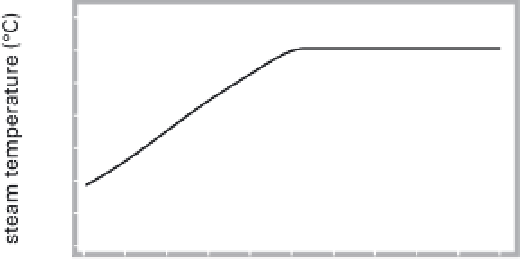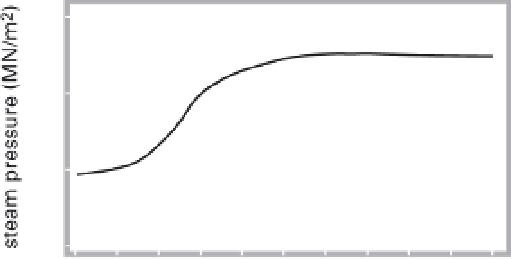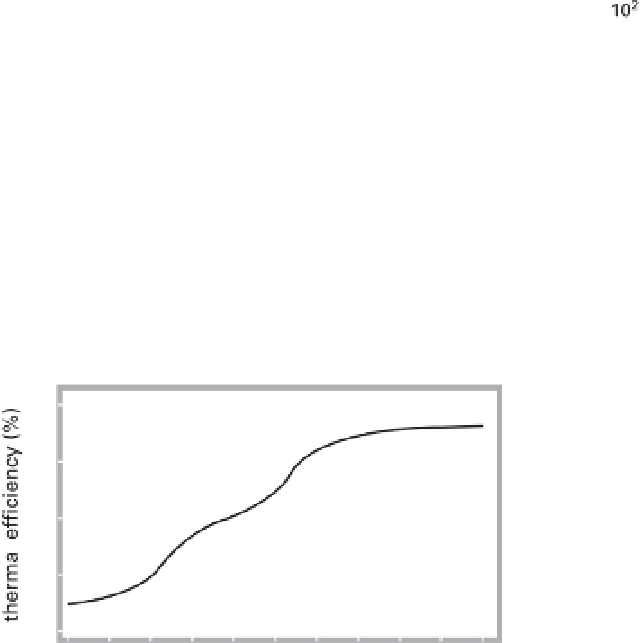Environmental Engineering Reference
In-Depth Information
8.11
Performance of the largest U.S. steam turbogenerators,
1900-2000. From Smil (2005a).
about 40% of the world's electricity. The average effi-
ciency of U.S. thermal generation rose from 4% in 1900
to 13.6% by 1925, then almost doubled by 1950, to
23.9% (Schurr and Netschert 1960). The nationwide
mean surpassed 30% by 1960, but it has stagnated since,
never exceeding 33% (fig. 8.11).
Mechanical stokers were used to feed small lumps of
coal (no larger than 0.5-1.5 cm) onto a grate. Although
the first experiments with finely milled coal took place
before WW I, pulverized coal combustion was widely
commercialized only after 1920. Pulverized coal com-
bustion involves blowing a mixture of air and finely
milled coal—70% of particles with diameter less than 75
mm, similar in size to baking flour—into a boiler and
burning it in a swirling vortex. Unfortunately, this effi-
cient mode of combustion is a major source of air pollu-
tion. Pulverized coal burning proceeds with excess air at
flame temperatures between 1600
C-1800
C, ideal con-
ditions for producing large volumes of NO
x
and for oxi-
dizing virtually all of the sulfur present to SO
2
. The
































